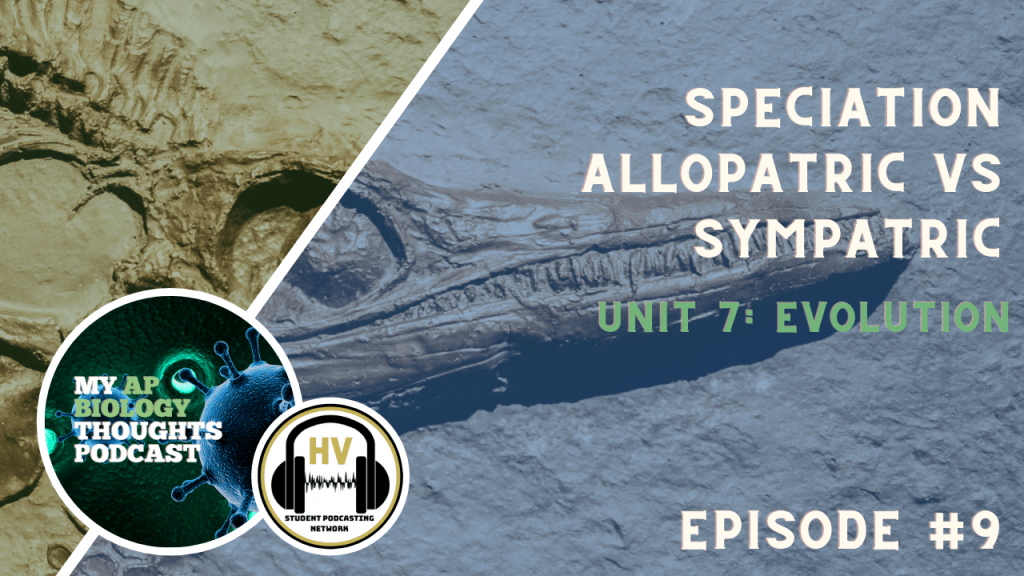Allopatric vs. Sympatric Speciation

My AP Biology Thoughts
Episode #9
Welcome to My AP Biology Thoughts podcast, my name is Adrienne and I am your host for episode 9 called Unit 7 Evolution: Allopatric vs. Sympatric Speciation. Today we will be discussing the differences between allopatric and sympatric speciation and I will provide examples for each.
Segment 1: Introduction to Allopatric & Sympatric Speciation
- Speciation: formation of a new species, occurs when a group of organisms isn’t capable of interbreeding and producing viable offspring anymore
- Allopatric speciation: occurs through geographical isolation like a physical geographic barrier
- Sympatric speciation: occurs without a geographical barrier
- Driven by other factors: habitat differentiation and sexual selection.
Segment 2: Example of Allopatric & Sympatric Speciation
Allopatric speciation
- Ex. Isthmus of Panama: narrow strip of land that causes a geographical barrier between Caribbean sea and Pacific ocean
- Two species of porkfish have emerged
Sympatric speciation: 2 types (prezygotic and postzygotic barriers)
- Prezygotic barriers: before the sperm and egg
- Habitat: different times of year organisms reproduce
- Ex. 2 related frog species, Rona aurora breeds earlier in the year than Roma poyilil making them unavailable for each other
- Behavioral: set of certain behaviors that must be executed to reproduce
- Ex. New Birds of Paradise and Birds of Paradise have different courtship characteristics
- Mechanical: the sexual parts must fit like a “lock” and “key”
- Ex. 20 different species of Bush Babies, different sexual parts won’t fit and allow reproduction
- Gametic isolation: if the gametes are incompatible, the organisms won’t reproduce
- Ex. Cells of red and purple sea urchins are genetically incompatible, fertilization is impossible
- Postzygotic barrier: after sperm and egg
- Inviability: organism dies before reproduction
- Infertility: organisms can’t form gametes
- Breakdown: F2 generation doesn’t sexually develop properly
- Ex. Horses and donkeys produce a mule but it cannot reproduce due to hybridization problems
Segment 3: Digging Deeper Allopatric & Sympatric Speciation
- Connect to evolution: speciation is a mechanism of evolution, different species emerge because they are not able to mate and reproduce with each other
- Ties into evolution because evolution is the change in allelic frequencies over time
- Speciation occurs when the gene flow between populations of organisms is stopped
- Populations diverge over time
- Allopatric speciation: different geographic regions have different selective pressures which leads to changes in the gene pool
- Sympatric speciation: factors such as polyploidy and sexual selection leads to different allelic frequencies
- Influence certain organisms with certain characteristics and behaviors to mate with each
Thank you for listening to this episode of My AP Biology Thoughts. For more student-ran podcasts, make sure that you visit www.hvspn.com. Thanks for listening!
Music Credits:
- “Ice Flow” Kevin MacLeod (incompetech.com)
- Licensed under Creative Commons: By Attribution 4.0 License
- http://creativecommons.org/licenses/by/4.0/
Subscribe to our Podcast

